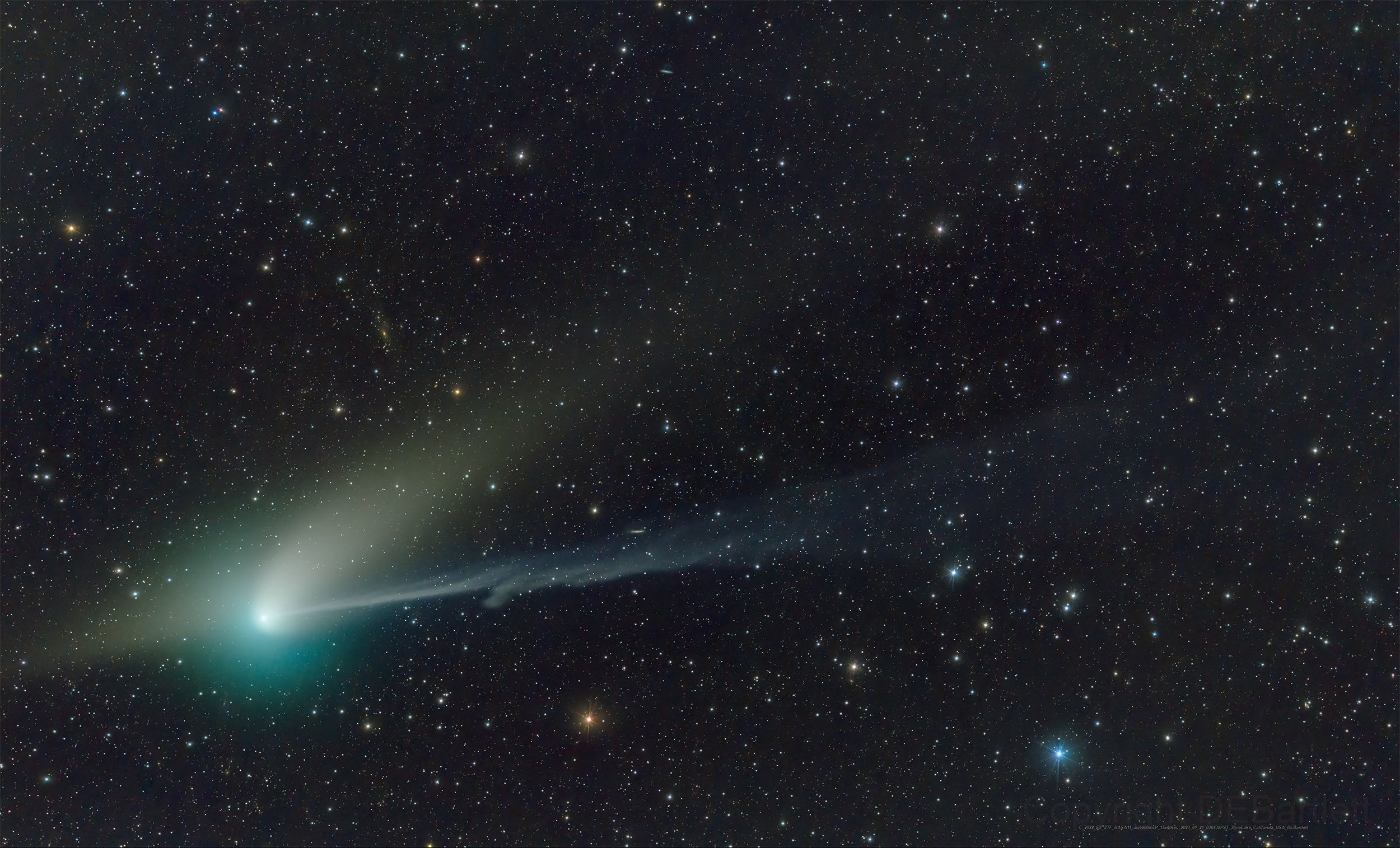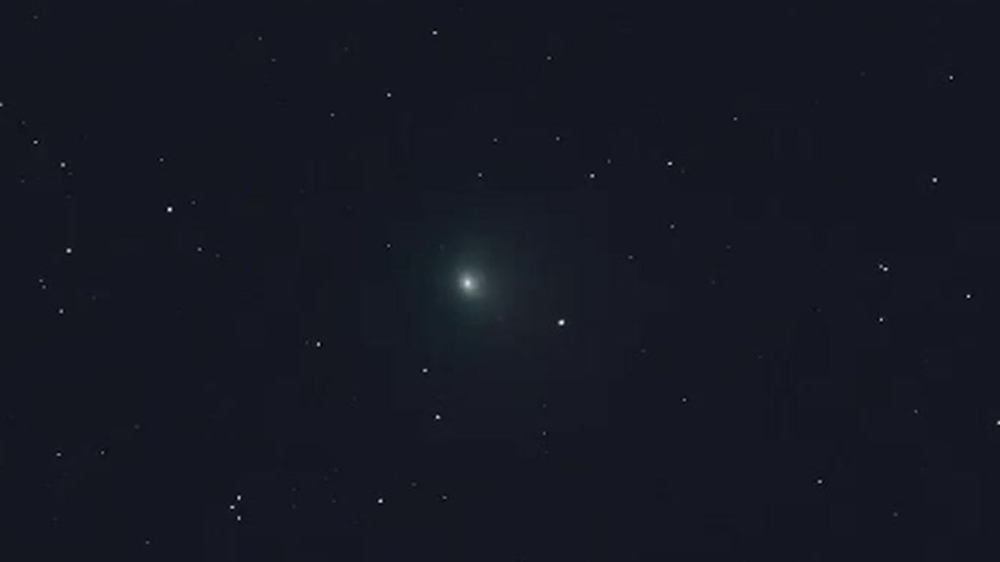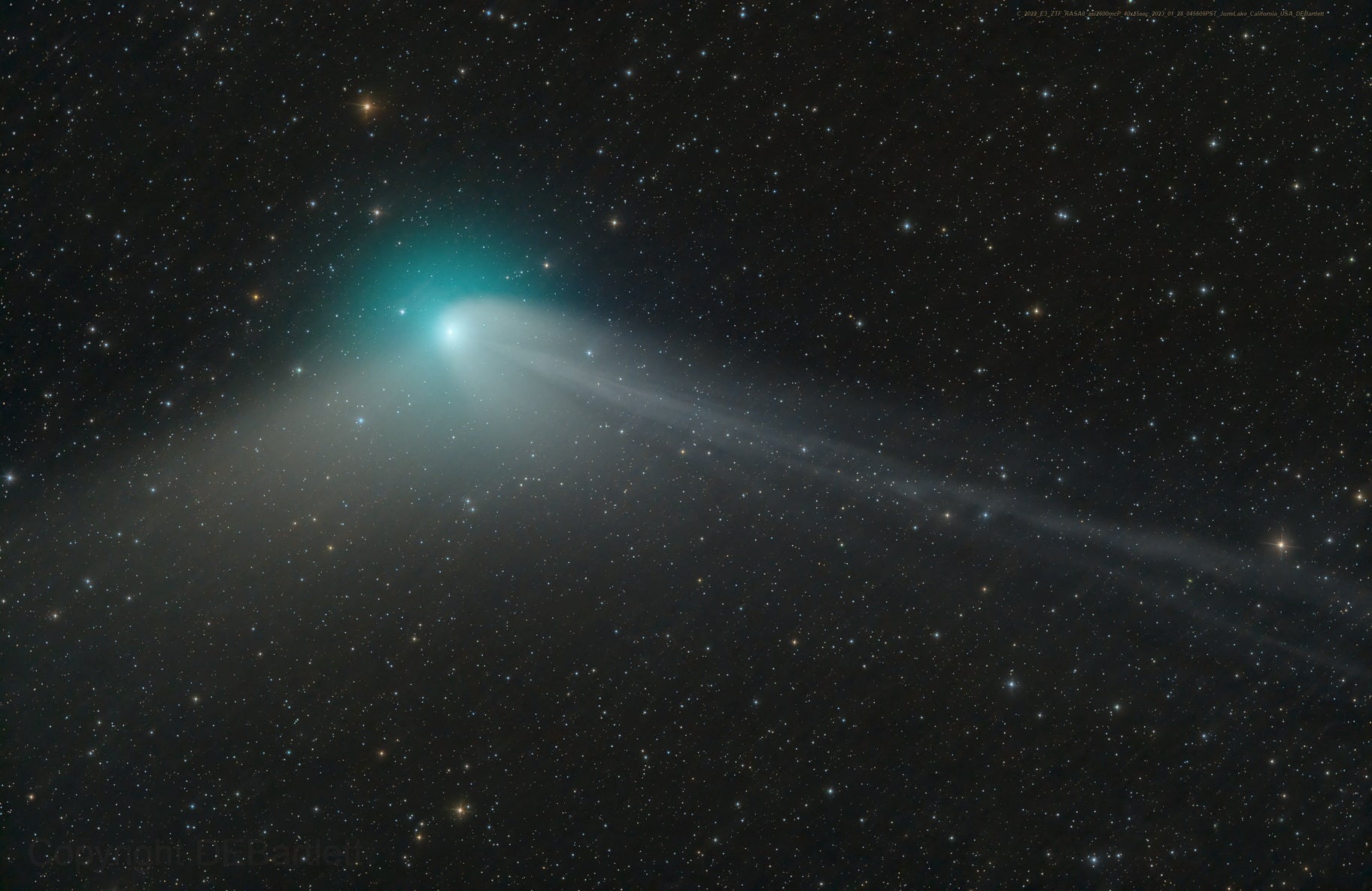What does the ‘exotic’ green comet look like in the night sky?
Object looks like a ‘fuzzy green ball or smudge in the sky’ says Royal Greenwich Observatory
For the first time in 50,000 years, a stunning green comet has skipped past Earth, making a remarkably close approach.
The flyby was close enough to be visible to the naked eye, and bright enough to be captured in stunning images taken from the Earth.
For those who saw it, the green comet looked like a flaming verdant star, hovering in the sky. But for many others, the comet might not have been visible at all: without the right conditions and work, it might not be visible at all.
Don Pollacco, a professor from the department of physics at the University of Warwick, said that anyone looking to see it would need “a clear sky, binoculars and a bit of luck”. The waxing Moon means that the comet could be hard to spot.
One picture, from the New Scientist’s Abby Beall, was notable not for its spectacular nature but for its help in seeing the comet. As she noted, the comet might not actually be easily visible – but spotting it might be possible using a phone, as well as the helpful map that she assembled.
But for those that did manage to spot it, the comet was an unusual green addition to the night sky – which it last visited so long ago that woolly mammoths and sabre-toothed cats were on the Earth below.
The colour that makes it so special is thought to be the result of radiation from the Sun and the gases that are coming out of the comet itself.
“The comet looks like a fuzzy green ball or smudge in the sky,” the Greenwich Royal Observatory said. “This green glow is a result of UV radiation from the sun lighting up the gases streaming off of the comet‘s surface.”
That green colour – as well as the characteristic green smudge – were visible in images taken from Earth of the comet as it flew by.



Join our commenting forum
Join thought-provoking conversations, follow other Independent readers and see their replies
Comments
Bookmark popover
Removed from bookmarks